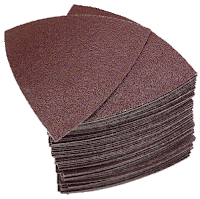 Aluminum (aluminium for UK and Canadian readers) is the third most abundant element in the Earth's crust and the most abundant metal. It's found combined with other elements in hundreds of different minerals.
Aluminum (aluminium for UK and Canadian readers) is the third most abundant element in the Earth's crust and the most abundant metal. It's found combined with other elements in hundreds of different minerals.As a metal, it has a myriad of uses and is notable for being resistant to corrosion. Discovered in 1825, but difficult to extract from its mineral ore, aluminum was as highly valued as gold or silver for a time due to its shiny, light-weight, corrosion-resistent properties.
In the mid-1800s, the French Emperor Napolean III served his most distinguished guests on aluminum plates rather than gold ones since aluminum was the rarer metal. In 1884, a six-pound pyramid of aluminum was placed atop the Washington Monument (picture at left). It wasn't until around 1890 that industrial processes were developed which allowed aluminum to be refined more easily and it become a more pedestrian metal we encounter on a daily basis.
When iron (Fe) is exposed to air, iron oxide (Fe2O3) rust forms. The soft rust flakes off exposing more iron to air forming more rust and the iron eventually corrodes away. Aluminum, however, is a different story. When metallic aluminum is exposed to air, it almost instantly forms a coating of aluminum oxide (Al2O3) a few atoms thick. This substance is incredibly hard (the only thing harder are diamonds) and result in aluminum being so resistant to corrosion.
Aluminum oxide (Al2O3) also forms naturally as a mineral called corundum.
South of Peeksill, NY, in the mid-Hudson Valley, is a deposit of emery formed 430 million years ago (Silurian Period) when blocks of the Manhattan Formation schist (the same rock exposed in Central Park in Manhattan) were metamorphically altered by intruding magma forming what's called the Cortlandt Complex. This altered rock is called emery and composed of corundum mixed with some other minerals species and mined for use an an abrasive (women who do their nails know what emery boards are). There aren't many emery mines around, one of the biggest is on the Greek island of Naxos.
Throw a little chromium (replace Al3+ with a few Cr3+) in corundum as an impurity and you have a variety known as ruby.
Rubies are relatively rare with the best historically coming from Burma (Myanmar). The word corundum, by the way, comes from the Tamil (a language in India) word kuruntam meaning ruby.
Sapphires, which come in a variety of colors are another form of corundum due to impurities substituting for the aluminum ions. If iron (Fe2+) and titanium (Ti4+) substitute, a deep blue color results.
Simple aluminum oxide... Corrosion protection for aluminum metal, abrasive material we've all used in sandpaper and emery boards, and fantastic gemstones like rubies and sapphires.








Question: if a product contains aluminum oxide would it be true to say that the product contains metal?
ReplyDeleteSpecifically I'm talking about the scrubby side of those Scrub Sponges. My friend says it contains metal and I was sure it didn't. The manufacturer said "The product contains aluminum oxide, a mineral also used for sandpaper."
So I'm still not sure who is correct in this situation. Can Aluminum Oxide be considered a metal?
Aluminum oxide contains a metal - aluminum - but the compound is not a metal. For example, see my November 23 post on Ochre. Ochre contains iron oxide but no one would call it a metal.
ReplyDelete